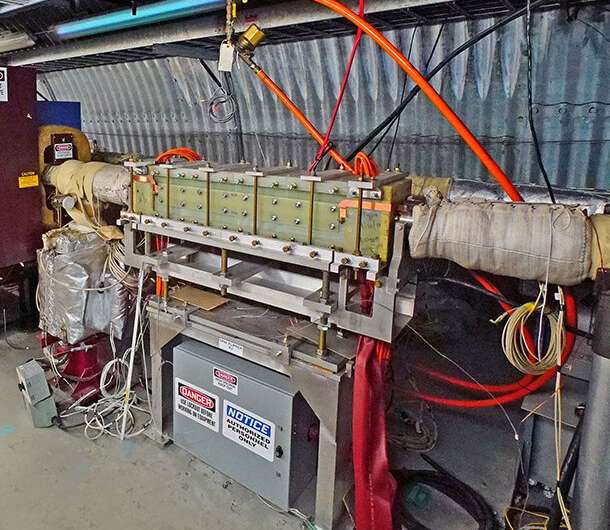Spin flipper upends protons

Protons spin. It's an intrinsic property that can affect experiments at accelerators that use beams of protons. Yet flipping proton spins could offer insights into nuclear physics experiments that study the first moments of the universe in a laboratory setting. A new "spin flipper" magnet assembly efficiently reverses the spin direction of protons circulating in the Relativistic Heavy Ion Collider (RHIC). These flips change the particle's spin with 97 percent efficiency without changing other beam characteristics. This flipping is essential to eliminate systematic errors that might be caused by protons having one spin direction throughout an experiment.
By colliding particles with their spins aligned in a given direction, scientists can tease out details of how protons' building blocks (quarks and gluons) contribute to spin—a property that makes magnetic resonance imaging (MRI) possible. Such nuclear physics experiments, which rely on proton collisions, need to measure the effects caused by the particles' spin precisely. To rule out errors that any given alignment might cause, scientists must regularly flip the spin direction during the experiments. The new spin flipper magnets do this efficiently. They will also make it possible to routinely obtain beam parameters that are essential to a more stable and optimized operation of the proton collider.
The spin of high-energy proton beams is strongly coupled to their orbit direction: a one-degree orbit deflection will also rotate the spin of a 255-billion-electron-volt (GeV) proton by 490 degrees, or more than a full rotation. To maintain polarized beams at these energies requires the use of two specialized magnet systems known as Siberian snakes and extremely accurate control of the beam orbit. The new spin flipper is composed of four direct current magnets and five alternating current magnets that are carefully arranged to completely localize the orbit deflections to within the spin flipper without interfering with the beam control in the rest of RHIC. This makes it possible to flip the spin without also causing depolarization. In addition, new optics functions in RHIC reduce the spread of the spin precession frequency very substantially. Together, these devices have achieved spin-flipping efficiency of 97 percent at both 24- and 255-GeV proton energies. These results demonstrate that the nine-magnet spin flipper will work for polarized proton experiments at RHIC. The same approach could be applicable at a possible future polarized electron ion collider.
More information: H. Huang et al. High Spin-Flip Efficiency at 255 GeV for Polarized Protons in a Ring With Two Full Siberian Snakes, Physical Review Letters (2018). DOI: 10.1103/PhysRevLett.120.264804
Journal information: Physical Review Letters
Provided by US Department of Energy





















